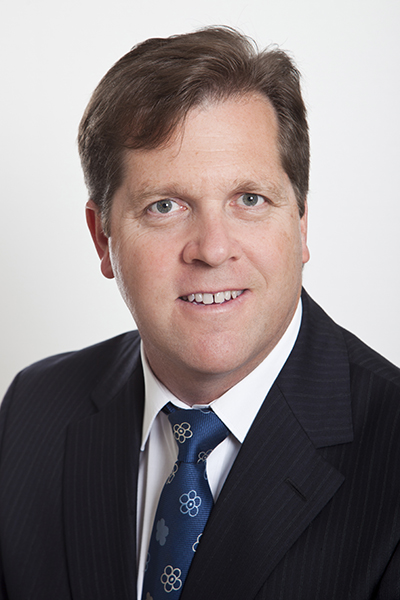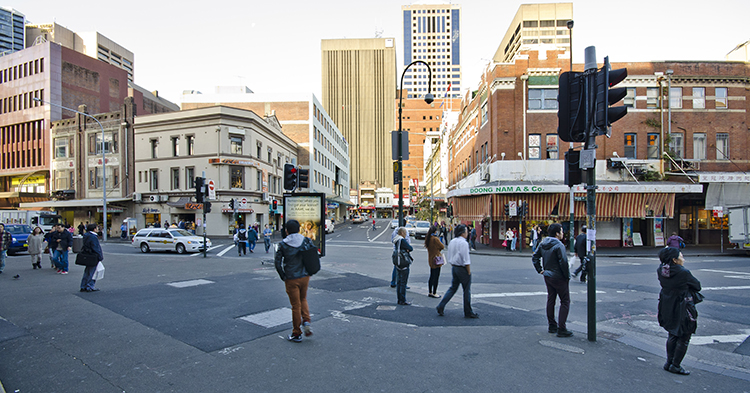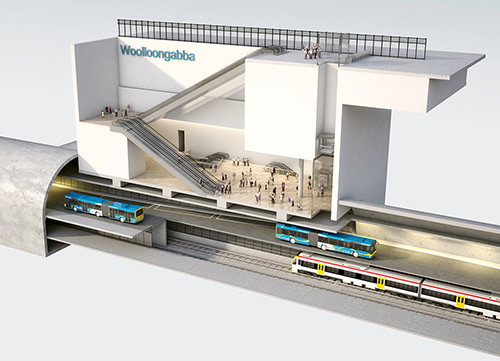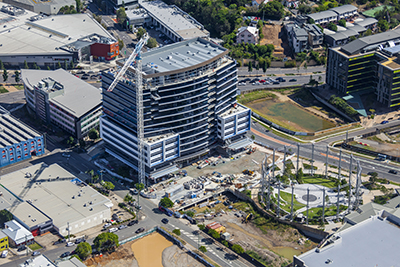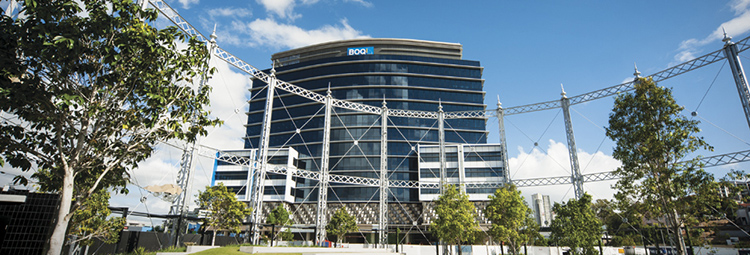Australia’s biggest roads, infrastructure drive
EXTRA >> THE Federal Government is well down the track on what it calls the biggest infrastructure drive in the nation’s history.
It is certainly a record in terms of money being spent: $50 billion worth of projects have already been announced, dominated by improvements to Australia’s road networks including projects that have been discussed for generations, such as an alternative Toowoomba range crossing. 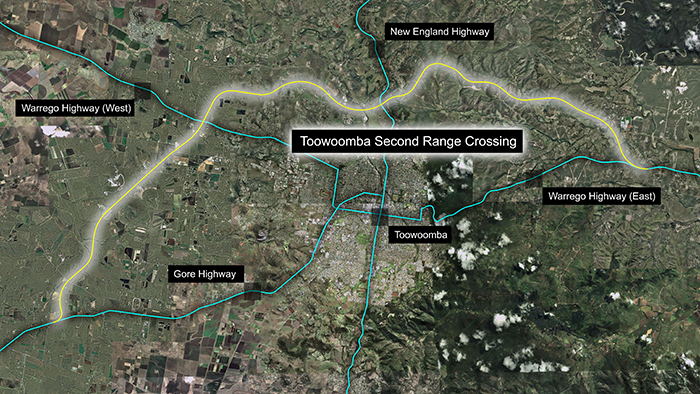
“Our record $50 billion infrastructure investment has seen work start on 22 major new projects (in 2014) and another 47 in 2015, most of which either languished under Labor or simply were not on their radar,” Infrastructure and Regional Development Minister Warren Truss said. He announced the program in December with Prime Minister Tony Abbott.
“In Queensland, our $6.7 billion commitment to fix the Bruce Highway, including 47 new projects to make it safer and less flood-prone, is well underway. This year construction started on raising the Bruce across the Yeppen Floodplain south of Rockhampton, as well as large sections of works between Cooroy and Curra.”
Mr Truss said early works had started on the last stage of the Townsville Ring Road.
“We have expanded construction to duplicate the road and include grade separated interchanges. The Australian Government will complete this project, which has been allowed to stretch out for a decade.
“In every corner of Australia we are building a better, more productive future. In Cape York we have started construction on a $260 million package of works, including projects that will keep roads open for longer during the wet season,” he said.
“There is $930 million to continue the Gateway Motorway North upgrade in Brisbane and up to $1.285 billion for the Toowoomba Second Range Crossing, expected to support 1,800 jobs during construction.”
FUNDING RE-BALANCE
“The Australian Government has re-introduced the traditional 80:20 funding split for new road and rail projects on the national network outside of metropolitan areas. Under Labor these networks would have been abandoned,” Prime Minister Tony Abbott said.
“In NSW this means our $5.64 billion will see the Pacific Highway finally duplicated by the end of this decade. Australia's largest regional road project is now in full swing, with three consortia shortlisted to oversee construction of the final 155km Woolgoolga to Ballina section in 2015.
“Our partnership with the NSW Government in Western Sydney ends half-a-century of dithering to lock-in the site for a new Western Sydney airport and we have committed $3.6 billion for the Western Sydney Infrastructure Plan to create new local jobs and slash travel times for motorists.”
Mr Abbott said the $1.5 billion investment in WestConnex, would cut 40 minutes on travel between Parramatta and Kingsford Smith Airport. The government is also providing a concessional loan of up to $2 billion to fast-track WestConnex Stage 2, bringing it forward by up to 18 months.
“WestConnex will create 10,000 direct and indirect jobs during construction,” Mr Abbott said. “Our joint $810 million contribution with the NSW Government to build the $3 billion NorthConnex project will also create thousands of jobs, allow motorists to bypass 21 sets of traffic lights and save up to 15 mins travel time.”
In Victoria, the Federal Government has committed $3 billion to build the East-West Link which is expected to create almost 7,000 jobs during construction and would slash travel times between the Eastern Freeway and CityLink to seven minutes and bypass 23 sets of traffic lights.
“It would be extremely disappointing for Victoria if the new Labor Government tries to cancel the East-West contract which could potentially damage Australia's reputation as a secure market for international investment,” Mr Abbott said.
“We are also fixing one of the world;s most scenic coastal drives, the Great Ocean Road, which has deteriorated due to the effects of age, heavy rainfall, salt corrosion and increasing tourist traffic. The first stages of our $25 million package of works kicked off in August.
“In November we invested $70 million of new funding to the Princes Highway East and a further $97.3 million to the Western Highway to further duplicate these nationally significant highways.”
In South Australia, the Federal Government is spending almost $1 billion to upgrade the North-South corridor. Planning commenced last year and construction will start in 2015 on both the Darlington and Torrens-to-Torrens projects.
Mr Abbot also said the $400 million commitment to Tasmania’s Midland Highway is now a key part of the Federal Government’s Economic Action Strategy, and there were seven projects, totalling $20 million, starting construction by end-January 2015.
Mr Truss said, “In Western Australia, our $676 million investment will finish the Gateway WA Project in Perth and we are getting on with delivering NorthLink WA on the Perth to Darwin Highway which we committed $615 million towards.”
Construction started in 2014 on the $307.8 million Great Northern Highway (Muchea to Wubin) and the $174 million North West Coastal Highway (Minilya to Barradale), with the $140.6 million Tonkin Highway upgrade now also in the planning stages.
“We are also delivering more for less through new innovative financing with a heavy vehicle road user charge being introduced in WA for the first time to help build the $1.6 billion Perth Freight Link, which will enable this vital project to go out to tender in 2015,” Mr Truss said.
REGIONAL DRIVE
In the Northern Territory, the Federal road program has completed the first section of the $103 million Tiger Brennan Drive duplication, with works on the next section between Woolner and Berrimah Roads ready to proceed.
“Construction began in November on the first two projects in the $90 million Regional Roads Productivity Package,” Mr Truss said, “which upgrades six regional and remote roads in the Territory that are key to continuing export growth from the resource and primary industry sectors.
“In addition, we have committed $2.1 billion for local roads under the Roads to Recovery Programme – including an extra $350 million more to provide double the funding in 2015–16. Another $500 million for Black Spots, crucial to fixing dangerous and accident-prone sections of local roads and streets, and $229 million for a new national highway upgrade program.
“Our additional funding of $200 million for heavy vehicle safety has received 150 proposals and our new $300 million Bridges Renewal program, to repair and replace local bridges, has attracted more than 270 project proposals.
“While in government for just over a year, we are delivering on an infrastructure agenda to set Australia on the road to prosperity for generations to come,” Mr Truss said.
2014–2015 New Major Projects
|
Project State |
Project Name |
Total AGC Cost |
Construction Start Date |
Construction End Date |
Funding Commitment |
New Project |
|
|
NSW |
Narellan Road Upgrade |
$ 53,000,000.00 |
23-Jul-14 |
Mid-18 |
Election 2013 |
Y |
|
|
NSW |
Moree Bypass Stage 2 |
$ 15,000,000.00 |
29-Aug-14 |
29-Feb-16 |
Election 2013 |
Y |
|
|
NSW |
The Ridgeway Upgrade—Tumbi Umbi |
$ 2,400,000.00 |
20-Oct-14 |
01-Jul-15 |
Election 2013 |
Y |
|
|
NSW |
Kennedy Drive Upgrade—Tweed Heads |
$ 3,300,000.00 |
20-Oct-14 |
30-Jan-15 |
Election 2013 |
Y |
|
|
NSW |
Gilmore Safety Package |
$ 5,000,000.00 |
01-Mar-15 |
Late 15 |
Election 2013 |
Y |
|
|
NSW |
Bringelly Road |
$ 407,000,000.00 |
Early 15 |
Late 19 |
Post Election 2013 |
Y |
|
|
NSW |
Werrington Arterial Road Stage 1 |
$ 35,000,000.00 |
Early 15 |
Late 16 |
Post Election 2013 |
Y |
Post Election—Projects committed to since the Coalition's Fiscal Budget Impact Document was released on 5 September 2013 |
|
NSW |
Cumberland Highway Intersection Upgrades—Fairfield City Council |
$ 5,784,319.00 |
Early 15 |
Late 15 |
Post Election 2013 |
Y |
|
|
NSW |
Wetherill Street Upgrade—Fairfield City Council |
$ 5,681,674.00 |
Early 15 |
Early 16 |
Post Election 2013 |
Y |
|
|
NSW |
Riverside Drive—Nambucca Heads |
$ 5,000,000.00 |
Early 15 |
Late 15 |
Election 2013 |
Y |
|
|
NSW |
Eagle Vale Drive Upgrade—Campbelltown City Council |
$ 17,531,000.00 |
Mid 15 |
Mid 16 |
Post Election 2013 |
Y |
|
|
NSW |
The Northern Road |
$ 1,231,000,000.00 |
Late 2015 |
Early 20 |
Post Election 2013 |
Y |
|
|
NT |
Outback Way—Northern Territory Section |
$ 20,000,000.00 |
01-Mar-15 |
30-Jun-16 |
Election 2013 |
Y |
|
|
QLD |
Dawson Highway—Kin Kora Roundabout |
$ 12,500,000.00 |
03-Nov-14 |
30-Jun-16 |
Election 2013 |
Y |
|
|
QLD |
Old Toogoom Road—Hervey Bay |
$ 1,000,000.00 |
24-Nov-14 |
29-May-15 |
Election 2013 |
Y |
|
|
QLD |
River Heads Road—Hervey Bay |
$ 3,750,000.00 |
08-Dec-14 |
30-Sep-15 |
Election 2013 |
Y |
|
|
QLD |
Bruce Highway—Townsville Ring Road—Section 4 |
$ 160,000,000.00 |
15-Jan-15 |
30-Dec-16 |
Post Election 2013 |
Y |
|
|
QLD |
Bruce Highway—Pavement Widening St Lawrence to Bowen |
$ 32,000,000.00 |
02-Feb-15 |
30-Jun-23 |
Election 2013 |
Y |
|
|
QLD |
Bruce Highway—Pavement Widening—Caboolture to St Lawrence |
$ 78,400,000.00 |
02-Feb-15 |
30-Jun-23 |
Election 2013 |
Y |
|
|
QLD |
Dalrymple Road |
$ 20,000,000.00 |
02-Feb-15 |
30-Jun-17 |
Election 2013 |
Y |
|
|
QLD |
Bruce Highway—Pavement Widening St Lawrence to Bowen |
$ 32,000,000.00 |
02-Feb-15 |
30-Jun-23 |
Election 2013 |
Y |
|
|
QLD |
Bruce Highway—Pavement Widening—Caboolture to St Lawrence |
$ 78,400,000.00 |
02-Feb-15 |
30-Jun-23 |
Election 2013 |
Y |
|
|
QLD |
Milton Road and Hale Street Intersection Upgrade—Brisbane |
$ 500,000.00 |
01-Mar-15 |
30-Sep-15 |
Election 2013 |
Y |
|
|
QLD |
Bruce Highway—Tinana Interchange |
$ 30,400,000.00 |
01-Mar-15 |
30-Jun-16 |
Election 2013 |
Y |
|
|
QLD |
Warrego Highway—Toowoomba to Miles—Toowoomba to Oakey Stage 1 |
$ 88,000,000.00 |
02-Mar-15 |
28-Nov-16 |
Election 2013 |
Y |
|
|
QLD |
Outback Way—Queensland Section |
$ 11,000,000.00 |
01-May-15 |
30-Jun-17 |
Election 2013 |
Y |
|
|
QLD |
Bruce Highway—Yellow Gin Bridge Upgrade |
$ 36,000,000.00 |
01-Jun-15 |
TBD |
Election 2013 |
Y |
|
|
QLD |
Toowoomba Second Range Crossing |
$ 1,285,000,000.00 |
01-Jul-15 |
30-Jun-18 |
Election 2013 |
Y |
|
|
SA |
North South Corridor—Darlington Interchange Upgrade |
$496,000,000.00 |
Mid 15 |
Mid 2018 |
Election 2013 |
Y |
|
|
SA |
South Eastern Freeway—Mount Barker Interchange |
$ 16,000,000.00 |
01-Dec-14 |
30-Jun-16 |
Election 2013 |
Y |
|
|
TAS |
Westbury Road Upgrade |
$ 500,000.00 |
27-Aug-14 |
05-Dec-14 |
Election 2013 |
Y |
|
|
TAS |
Midland Highway Safety Works Package—Conara to Cleveland Stage 1 |
$ 1,945,600.00 |
28-Nov-14 |
29-May-15 |
Election 2013 |
Y |
|
|
TAS |
Midland Highway Safety Works Package—South of Kempton |
$ 3,850,000.00 |
28-Nov-14 |
29-May-15 |
Election 2013 |
Y |
|
|
TAS |
Midland Highway Safety Works Package—South of Spring Hill |
$ 4,660,000.00 |
28-Nov-14 |
29-May-15 |
Election 2013 |
Y |
|
|
TAS |
Midland Highway Safety Works Package—North of Spring Hill |
$ 3,639,000.00 |
28-Nov-14 |
29-May-15 |
Election 2013 |
Y |
|
|
TAS |
Midland Highway Safety Works Package—Kings Meadows Roundabout |
$ 1,488,000.00 |
03-Dec-14 |
29-May-15 |
Election 2013 |
Y |
|
|
TAS |
Midland Highway Safety Works Package—South of Tunbridge Upgrade |
$ 3,422,000.00 |
05-Jan-15 |
27-May-16 |
Election 2013 |
Y |
|
|
TAS |
Midland Highway Safety Works Package—Mud Walls and Sorell Springs Road Junction Upgrades |
$ 1,676,800.00 |
05-Jan-15 |
29-May-15 |
Election 2013 |
Y |
|
|
VIC |
Great Ocean Road Upgrade |
$ 25,000,000.00 |
24-Aug-14 |
30-Jun-18 |
Election 2013 |
Y |
|
|
VIC |
Western Highway—Beaufort and Ararat Bypass Planning |
$ 3,000,000.00 |
16-Sep-14 |
31-Dec-16 |
Post Election 2013 |
Y |
|
|
VIC |
Henty Highway Upgrade—Horsham to Warracknabeal |
$ 3,000,000.00 |
27-Oct-14 |
30-Dec-15 |
Post Election 2013 |
Y |
|
|
VIC |
Indigo Shire Roads Package |
$ 1,842,000.00 |
05-Nov-14 |
30-Jun-15 |
Election 2013 |
Y |
|
|
VIC |
Princes Highway East—Overtaking Lanes between Nowa Nowa and Orbost |
$ 5,350,000.00 |
17-Nov-14 |
30-Jun-17 |
Election 2013 |
Y |
|
|
VIC |
East West Link—Eastern Section (Stage 1) |
$ 1,500,000,000.00 |
31-Dec-14 |
31-Dec-19 |
Election 2013 |
Y |
|
|
VIC |
Princes Highway West—Terang Intersection Upgrades |
$ 765,000.00 |
01-Jan-15 |
31-Dec-15 |
Post Election 2013 |
Y |
|
|
VIC |
Port of Geelong Access Improvement Package |
$ 2,625,000.00 |
01-Jan-15 |
30-Apr-16 |
Post Election 2013 |
Y |
|
|
VIC |
Dana Street and Dawson Street Intersection Upgrade |
$ 123,000.00 |
10-Jan-15 |
01-Mar-15 |
Election 2013 |
Y |
|
|
VIC |
Condah—Hotspur Road Upgrade |
$ 2,500,000.00 |
01-Feb-15 |
30-Jun-16 |
Election 2013 |
Y |
|
|
VIC |
South Gippsland Highway—Koonwarra Realignment Planning |
$ 157,500.00 |
17-Feb-15 |
30-Jun-17 |
Post Election 2013 |
Y |
|
|
VIC |
Calder Freeway—Station Road Upgrade |
$ 1,663,750.00 |
02-Mar-15 |
30-Jun-18 |
Post Election 2013 |
Y |
|
|
VIC |
Strzelecki Highway—Overtaking Lane South of Driffield |
$ 3,206,250.00 |
03-Mar-15 |
26-Mar-16 |
Post Election 2013 |
Y |
|
|
VIC |
Craigieburn Road and Hanson Road Intersection Upgrade |
$ 610,000.00 |
27-Apr-15 |
30-Oct-16 |
Election 2013 |
Y |
|
|
VIC |
Nepean Highway—Tower Road Intersection Upgrade |
$ 300,000.00 |
27-Apr-15 |
30-Jun-18 |
Election 2013 |
Y |
|
|
VIC |
Surrey Road and Junction Road Intersection Upgrade |
$ 500,000.00 |
27-Apr-15 |
30-Jun-18 |
Election 2013 |
Y |
|
|
VIC |
St Albans Rail Grade Separation |
$ 151,000,000.00 |
01-May-15 |
30-Apr-17 |
Post Election 2013 |
Y |
|
|
VIC |
Bedford Road and Great Ryrie Street Intersection Upgrade |
$ 1,000,000.00 |
02-May-15 |
30-Jun-15 |
Election 2013 |
Y |
|
|
VIC |
Princes Highway West—Winchelsea to Colac duplication |
$ 185,500,000.00 |
01-Jun-15 |
30-Jun-19 |
Election 2013 |
Y |
|
|
VIC |
Calder Highway—Overtaking Lane at Nowingi, North of Hattah |
$ 1,875,000.00 |
14-Aug-15 |
26-May-16 |
Post Election 2013 |
Y |
|
|
VIC |
Calder Highway—Ravenswood Interchange |
$ 45,000,000.00 |
01-Sep-15 |
31-Dec-17 |
Election 2013 |
Y |
|
|
VIC |
Calder Highway—Ravenswood Rest Area |
$ 4,500,000.00 |
01-Sep-15 |
30-Jun-17 |
Post Election 2013 |
Y |
|
|
VIC |
Midland Highway—Doyles Road Intersection Upgrade |
$ 1,875,000.00 |
01-Sep-15 |
30-Jun-18 |
Post Election 2013 |
Y |
|
|
VIC |
Princes Highway East—Murrungowar Rest Area Upgrade |
$ 2,535,000.00 |
01-Sep-15 |
28-Feb-16 |
Post Election 2013 |
Y |
|
|
VIC |
South Gippsland Highway—Leongatha Heavy Vehicle Alternate Route |
$ 1,280,000.00 |
01-Sep-15 |
30-Jun-18 |
Post Election 2013 |
Y |
|
|
VIC |
Princes Highway East—Sand Road Interchange |
$ 22,500,000.00 |
01-Oct-15 |
30-Apr-17 |
Post Election 2013 |
Y |
|
|
VIC |
East West Link—Western Section (Stage 2) Investment |
$ 500,000,000.00 |
01-Dec-15 |
01-Dec-23 |
Post Election 2013 |
Y |
|
|
VIC |
East West Link—Western Section (Stage 2) |
$ 1,000,000,000.00 |
01-Dec-15 |
31-Dec-23 |
Post Election 2013 |
Y |
|
|
WA |
Roe Highway—Berkshire Road Grade Separation |
$ 27,200,000.00 |
01-Nov-14 |
31-Dec-15 |
Post Election 2013 |
Y |
|
|
WA |
Kwinana Freeway—Roe Highway to Russell Road widening |
$ 31,300,000.00 |
01-Nov-14 |
TBD |
Post Election 2013 |
Y |
|
|
WA |
Nicholson Road Grade Separation |
$ 18,000,000.00 |
01-Dec-15 |
TBD |
Post Election 2013 |
Y |

 How to resolve AdBlock issue?
How to resolve AdBlock issue? 